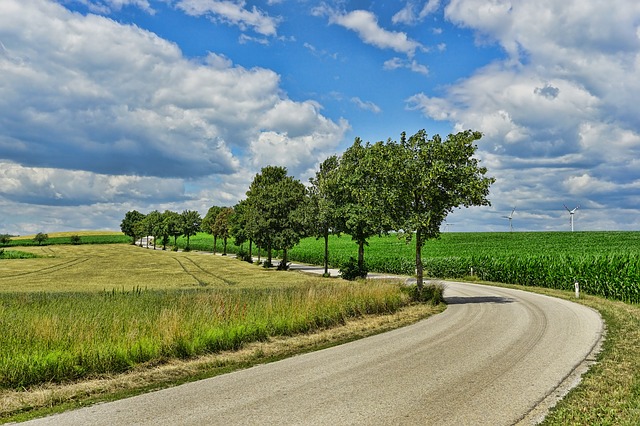There’s probably too many reasons the environment is important to humans to list them all in one guide.
Below is a list of some of the main reasons why the environment is important to humans and society.
We’ve covered social, health, survival, economic and other reasons.
Summary – Why The Environment Is Important To Humans & Society
A summary of the reasons:
1. Natural resources are critical to the survival of people, and the economic development of countries
2. Climate and weather impacts where people can live/what areas are habitable
3. The environment, availability of natural resources, and climate/weather heavily impacts and sometimes benefits key areas of society and the economy (industries such as farming/agriculture in particular)
4. Environmental health and environmental degradation can impact a range of things – availability of sustainable resources, human health, the economy, and more
5. There’s many plants that are important to humans
6. There’s many organisms and animals that are important to humans
7. The ocean is important to humans and society
8. Forests and in particular rainforests play an important role in the environment, and for humans
1. Natural resources are critical to the survival of people, and the economic development of countries
Natural resources are essential for our everyday lives and survival.
They are also essential to our economies.
For example, we need fresh water to drink and use everyday.
But, we also use water directly and indirectly in key economic industries such as power generation, and agriculture, just to name a few.
Land and top soil are other examples of natural resources that help us with everyday life.
There’s also all the industries that use natural resources such as ores from mining for economic production.
The total value of the environment to our economies is probably incalculable – but, it’s fair to say the environment and it’s resources are invaluable to economic production.
Countries without adequate natural resources, or access to adequate natural resources (physically, economically, or via trade or importation), can experience significant everyday problems, and economic problems.
2. Climate and weather impacts where people can live/what areas are habitable
Some areas in the world are habitable, and some aren’t.
Some habitable areas are also more habitable than others.
Climate, weather and natural events play a large role in that.
For example, average above ground level temperature, rainfall, humidity, and whether the area is impacted by droughts, floods, tornadoes, tsunamis, etc. can impact how habitable an area is.
3. The environment, availability of natural resources, and climate/weather heavily impacts and sometimes benefits key areas of society and the economy
Agriculture is one example of an area of society that is heavily impacted by the environment, availability of natural resources, and the climate/weather in an area.
Agriculture is very important for things such as food production, and fibre production, and the agricultural industry contributes heavily to many economies, but also to other industries within the economy.
Agriculture relies on several things, including but not limited to:
– Adequate fresh water supplies and/or rainfall
– Adequate soil for whatever is being grown or produced
– The right climate and weather for growing and producing different types of crops and plants, along with predictable seasons
– The absence of natural events or extreme weather that could destroy crops and other produce
Another example is how ecosystems [provide ‘ecosystem services’ such as] pollination, soil formation, and nutrient cycling, all of which are necessary functions for the production of food (wikipedia.org)
In addition to these examples, several things we do can lead to secondary environmental problems. Two examples are how air pollution can lead to acid rain, and how CO2 emissions can lead to acidification.
Human activity and the environment feed into one another.
4. Environmental health and environmental degradation can impact a range of things
There’s a range of ways that environmental health or environmental degradation can be measured or assessed.
One example is with the analysis of planetary boundaries (but there’s many other tools, indicators and measurement strategies).
The more an environment in a particular area degrades, the more impact it can have on things such as:
– The availability of sustainable resources (for example, water pollution and contamination may lead to less freshwater reserves available – this is just one of many examples though)
– Human health (for example, outdoor air pollution can mean that humans are breathing in air pollutants such as fine particulate matter)
– The economy (for example, the loss of topsoil via erosion and other ways can lead to decreased yields and other losses of production in the agricultural sector. Another example is the restriction of freshwater for farmers can lead to less production as well)
5. There’s many plants that are important to humans
The environment supports and is home to plant life that is important to humans.
6. There’s many organisms and animals that are important to humans
The environment is home to many organisms and animals that are important to humans.
7. The ocean is important to humans and society
There’s a range of reasons the ocean is important to humans.
Just a few examples include oxygen production, carbon absorption, regulation of climate, economic value, use for transport, and more.
There’s currently a number of issues oceans around the world might be facing, but, there might also be options to address these issues.
8. Forests play an important role in the environment, and for humans
Forests provide us with a number of benefits, and rainforests in particular provide a lot of unique benefits.
Trees in general have an important role to play and provide a number of benefits
Oxygen production, carbon absorption, provision of biodiversity, contribution to soil health, and the provision of resources are just some examples
Sources
1. Various BMR guides
2. https://en.wikipedia.org/wiki/Sustainable_agriculture
','' ); } ?>
